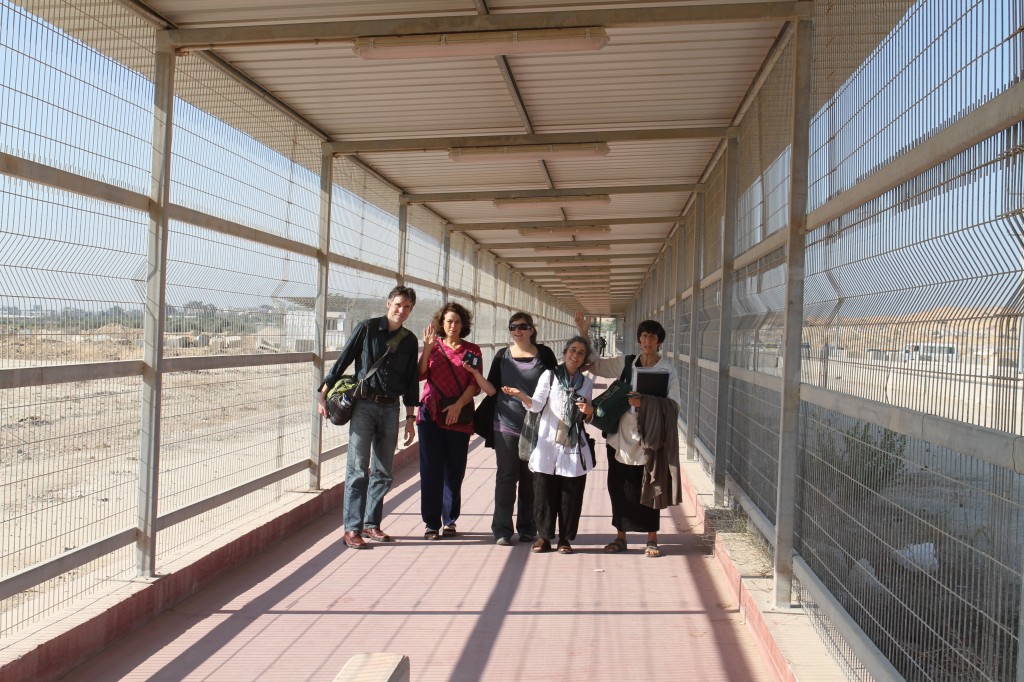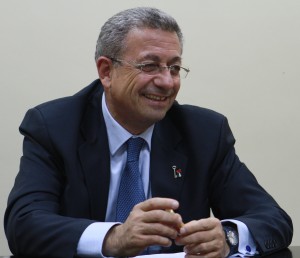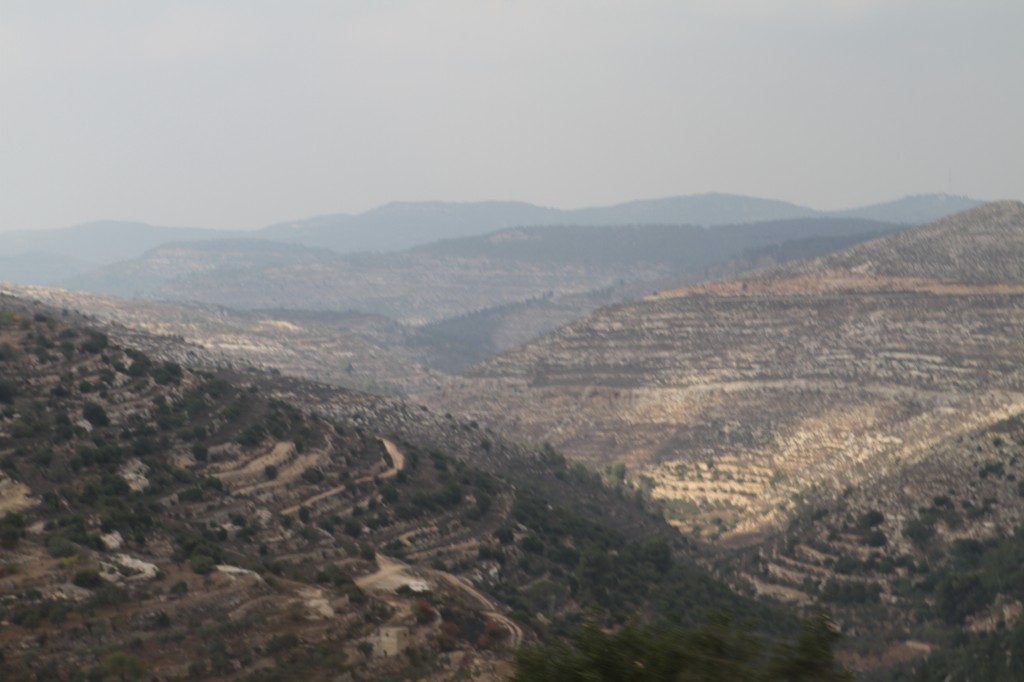From Gaza to Bethlehem and Ramallah

Gerri Haynes, right, and the other members of the WPSR medical team navigate the intricate security system on the Gaza border (Photo by Bob Haynes).
By Gerri Haynes
(Gerri Haynes, a former president of Washington Physicians for Social Responsibility, is sending back reports from inside blockaded Gaza. As she did three times before, Gerri organized a team of doctors and other health care providers to work in hospitals and clinics in Gaza in an effort to directly help the people there and to bring attention to the ongoing humanitarian crisis that the Israeli blockade has created. Seventh in the series.)
Early this morning, we boarded a van for the border between Gaza and Israel. Leaving Gaza is complex. We bid farewell to the great people who helped make our stay possible, then drove north and east to Erez, the only passage between Gaza and Israel for people.
Passing to Israel took about two hours. First, on the Gaza side, two stops are required for passport checks. Then, with baggage on a cart pushed by a Palestinian, there is a long walk (1/3 mile?) through a linear cage to the first step into the Israeli side. There, after a door denying return to the Gaza side closes, a camera surveys people and bags and a disembodied voice provides direction to move through two sets of doors or turnstiles to the next section of the crossing.
With many more bags than people, we gradually moved up a long, wide corridor to another set of doors and turnstiles. Slowly, we fed our baggage through a turnstile and encountered a human being. This gentleman directed us to place all of our electronic gear into one large flat plastic bin. Then we waited for about one hour as Palestinian patients and businessmen filtered around us and through the next set of doors.
When our turn came, our gear and opened suitcases were placed on a conveyor belt and moved up and out of site. We then passed through another set of doors, approached a full-body scanner, waited in line for each persons turn to be scanned, completed the scan, entered an area of small individual cubicle and waited while our scans were analyzed by personnel visible on the building’s second floor. When we were released from the cubicles, we entered a room where plastic bins were moving slowly around on an elevated a square of rollers. We retrieved our electronic gear and moved through another door to the luggage inspection stands. Here, gloved human beings were going through each piece of luggage – the contents scrambled and then returned to us to be re-packed.
Finally, we passed through passport control and moved away from the building, across roads, down a sidewalk, through another turnstile and down a set of stairs to a parking lot where the driver of a van waited to take us to Bethlehem.
I recount this long process to demonstrate that each person leaving Gaza does so with difficulty. Joining us in this passage were sick children and heart-broken adults. Palestinians leaving Gaza must go through an arduous vetting process before passage is even a possibility and a mother (young fathers are seldom allowed to pass) completing this arduous journey with a sick child faces daunting obstacles.
The land between Erez and up to Bethlehem is beautiful. The political landscape is visible in the development and population of the land, but the land itself is lovely. In the afternoon, we drove the long, dangerous road through the Valley of Fire to Ramallah. Without special permission, Palestinians are not allowed to drive the direct (shorter, faster, safer) route to Ramallah through Jerusalem.
In Ramallah, we were treated to an inspiring visit with Dr. Mustafa Barghouthi, head of the Palestine Medical Relief Committee. Dr. Barghouthi reviewed service provided by PMRC in Ramallah, Nablus and Gaza and invited us to join them in their work during our next visit. As Director General of the Palestine National Initiative, a party dedicated to non-violence and secular democracy, he spoke of his hopes for resolution of the current deadlock in the peace process between Palestine and Israel – emphasizing the need for non-violent strategies to express the needs of the Palestinian people.Returning to Bethlehem, we enjoyed a wonderful dinner, prepared by the sister-in-law of our friend, Zoughbi Zoughbi. Zoughbi is the tireless director of Wi’am, the Palestinian Conflict Resolution Center. He and two of his sons, Lucas and Rafiq, accompanied us to Ramallah. It was late when we bid farewell to our hosts and their other guests. Zoughbi parted from us, saying that he was needed to facilitate the resolution of another conflict in Bethlehem. His days are always long.
Tomorrow, we will tour East Jerusalem, gather more data on water in preparation for a presentation by members of our group to the American Public Health Association meeting in Washington DC, and then return to Tel Aviv for our flights from this land.
RSS feed for comments on this post. TrackBack URI

